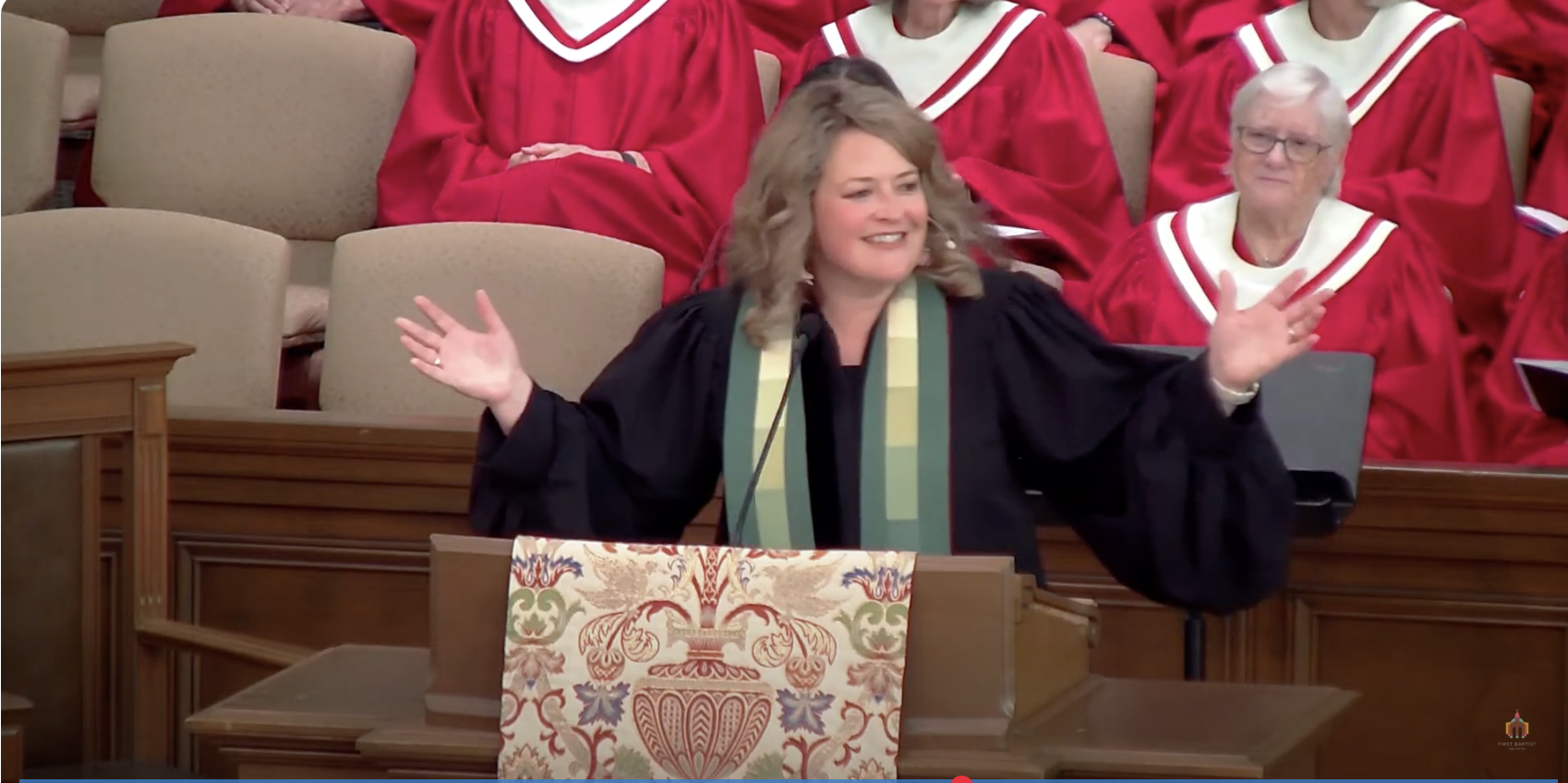I As the story goes, an oyster saw a loose pearl that had fallen into the crevice of a rock, right on the ocean floor. It took great effort, but she finally managed to secure the pearl again and set it just beside her on a leaf. That oyster knew that humans liked to search for pearls, and thought to herself, “the pearl will tempt them, so they’ll take that and leave me be.”
Shortly thereafter when a pearl diver showed up, however, he proved her wrong. You see, his eyes were conditioned to look for oysters and not for pearls resting however inconspicuously on leaves.
So that diver grabbed the oyster, which actually didn’t happen to have a pearl inside, and in so doing, allowed the real pearl to slip back down into the dark crevice of the rock.
In Anthony de Mello’s telling of this story, he adds a postscript: “you know exactly where to look,” he counsels. “That is the reason why you fail to find God.”1
II “The reign of God is worth everything you have,” suggest the parables we read in Matthew today.2 The kingdom of heaven islike a treasure in a field, that a man discovers and digs up and delightsin it and reburiesit, only to go out in joy and sell everything he hasin order to buy the field. What a lucky man to stumble upon such a treasure! The kingdom of heaven islike a merchant on the hunt for fine pearls, who when discovering the one of greatest price, goes out and sells everything he had in order to buy the pearl. What a shrewd and skillful seeker to discover just the thing he was looking for! The kingdom of heaven is like a dragnet cast into the sea that collects fish of all kindsthat are sorted out later. What a net that finds the whole lot and hoists them up into the light!
Not so fast, though. Because, like parables themselves, these three disrupt our common perceptions and unsettle our easy interpretations. Unlike some of the other parables of Matthew we have encountered, these three aren’t so neatly allegorized, meaning: Jesus doesn’t tell us, “the treasure is me, and the field is the world, and you are the diggers for said treasure,” or “the merchant is God, and you – each and every one of you – are pearls of great price,” or “the dragnet is God’s grace which catches you all, and clearly those people you can’t stand are the evil who will burn in the furnace of fire.” Nope. Not so fast.
Remember, Jesus’ parables are intended to provoke and unsettle, to surprise and refine. So the treasure might be Jesus… or it might be the dream of God… or it might be the church!… or it might be the thing in your life you care most deeply about or desire… or it might be the very person you are willing to sacrifice everything for… or it might be your existential happiness or wisdom or detachment or fulfillment… or or or. Yes. Exactly.3
Perhaps there’s something to the essential hiddenness to these parables that provokes us to a deeper look, so that we don’t miss the proverbial pearl for the oyster. Barbara Brown Taylor says, “if the kingdom is like these, then it is not something readily apparent to the eye, but something that must be searched for, something just below the surface of things waiting there to be discovered and claimed.”4 For, as one writer says, “finding the treasure disrupts normal daily life and promises a new way of life. The treasure is so valuable that it is worth doing new, joyful, risky, and costly things to possess it.”5 These discoveries – the treasure, the pearl, the net full of fish – have something to teach us today. So let’s get curious about them, particularly the first two of the treasure in the field and the pearl of great price, and what they teach us about tending that which is priceless.
IIIInterestingly enough, these parables do give us a clue to the aftermath of discovery. The reaction is embedded right within the story! The man who found a treasure hid it again, sells all he has, and buys the field where it’s buried. The merchant who found the pearl sold all he had to buy it. Their response gives us a clue about how to tend what’s precious to us. For these two, the pricelessness of the discovery led to a priceless response. Literally, the price was everything in order to hold fast to what they found.
Yet every time I read these two parables, I wish I knew what came next – what followed the discovery and the response. What happened the next day, or a month or two later, or after a few years had passed? What happened to that man who found the treasure in the field and reburied it, only to come back later in joy and buy the whole field? Does he build a wall around that field to keep out the riff-raff? Does he get ambitious and keep looking in other fields for more treasure, or hire a crew of diggers to check all the neighboring fields? Does he diversify, thinking to himself, “I found treasure in a field, so what’s to keep me from winning the lottery, or landing that amazing deal?” Does he leave the treasure buried or does he dig it up again and use it for something? Does he plant a tree or build an altar to mark what special thing he found in this place, or is the field now overgrown and forgotten, now that the thrill of discovery has passed?
What about the merchant with the pearl of great price? Does he still buy and sell, as merchants do? Or with the sale of all his things, does he work in IT now that he’s no longer hustling like he did? Did he become obsessed with that pearl’s safety? Did protecting it drive him mad?In his fear, did he try to smother or helicopter around that pearl rather than letting it shine like the sun? Did he suffer a bout of perfectionism and fixate on that one blemish that just wouldn’t buff out? Or does the luster fade, and the thing he once called “the pearl of great price” becomes just “the pearl,” gathering dust on a shelf in the corner?
How did they tend that which is priceless over the long haul, when the going got tough or the honeymoon ends, when circumstances change or loss disrupts?
IV I’m sure we don’t have to jump far to begin applying these questions to the treasures in our lives, do we? Name the priceless treasure, name the pearl of greatest value, and I bet we’ll find the same list among us. Family. Friends. Health. Resources. Community. Creation. Sabbath. Meaning. Purpose. Wonder. Hope. Grace. Joy. Peace. And Love above all else. The things that matter most are priceless to us, aren’t they? They’re of infinite value, precious and cherished and irreplaceable all the same.
Yet there is not a one of us in this room that is without error in how we tend the priceless things in our life. We start taking our family for granted, giving our spouse or kids or parents or our siblings whatever is left after we attend to the most urgent needs in front of us. Those well-meaning “we should get together sometime” comments with friends get lost in the mix and turn into lengthy silences and forgotten plans. We slide into idleness with our health, loosening our grip on good habits since things seem to be fine. We work just a little on a day off here, and then a little more on a day off there, and then can’t remember how to sit still beyond our efforting. We start complaining about our work (even when we really do love what we do); we grumble about the weather (even though we don’t really mind a rainy day now and then); we point out all the flaws in our neighborhood, our church, our community (even though the list of what we love far outweighs the list of what we don’t); we get distracted by whatever’s in front of us, forgetting that which is important but not urgent (even though we know that matters most).
And so often it takes a disruptive event to dislodge our disregard, to irritate our indifference, to confuse our carelessness so that we can recenter, refocus, renew our tending energies toward the things we claim to value above all else. Our marriage is never more important than when it’s tested. Our children are never more important than when they go through hard things. Our health is never more important than when we have a scare. Our world is never more important than when we have a natural disaster. Our rest is never more important than when we experience burnout. Our hope is never more important than when we despair.
Tending what’s priceless means that you have the eyes to see that which is so very very good when it’s before you. It means you’re not always looking for the better job, the more fun friend, the cleverer partner, the more interesting community. It means you must quiet the anxious, nagging, dissatisfied voice in your head that suggests there’s always more to do, other fields to search, or other oysters to crack open. It means you can see clearly the treasures worth giving it all up, and the false luster of addictions that don’t deserve the full weight of attention you’re giving them. It means you’re being formed to discover the good, and when you do, you summon all within your capacity to give it your very best attention. It means that once you see and know and love your treasure or your pearl, you break the cycle of the hunt. You step out of the game. You shift your energy from thrusting to tending. You prioritize the priceless, and give that pearl your very life.
Tending our relationships, our loves, our meaningful movements and quiet places in our lives, our relationship with God, our place in the landscape of things gives us deep, abiding joy. Giving ourselves wholeheartedly to the care of what matters most of all is good, and beautiful, and true. It connects us and grounds us, to each other and the world, of course, but mostly to the One who looks at us like a parent to their wayward child and says “all I have is yours. You are a treasure.”
V Some of the best afternoons that Josh and I enjoyed last summer on our sabbatical anniversary trip to Maui were the two we spent in Lahaina on Maui’s northwest coast. There, we had spicy pad thai, sushi, and sparkling water by the ocean, and bought coconut ornaments for our family, splashed in red flowers and a cheerful “mele kalikimaka” on each one. We wandered in and out of stores lining Front Street, caught inspiration in the breeze flowing through open windows in the downtown churches, learned about Lahaina’s history in the Heritage Museum housed in the Old Lahaina Courthouse, all the while soaking up all the bustling, energetic vibes of this coastal town and learning about her rich and vibrant history. Yet beyond all that beauty and energy, we couldn’t miss that which was right at the heart of Lahaina – indeed right at the heart of Maui – stands the banyan tree. At over 60 feet high, with 46 major trunks, whose canopy spans nearly an acre of land, the banyan tree has been the site of many a wedding, a celebration, a remembrance.
Josh and I sat a spell under its maze of grandiose, spindly branches last summer, and soaked up all that happened in its shade. Tourists like us, snapping pictures in front of the tree. Locals chatting for an afternoon break, or enjoying their lunch, or seeking a few dollars. Vendors selling artwork and trinkets to interested buyers. Little kids chasing the birds and roosters who crowded the ground below. Life, teeming, abundant.
We were, like millions around the world in recent months, devastated to see the fires’ catastrophic destruction of Lahaina and grievous over the lives lost, lives irrevocably altered, lives now lived before and after this incomparable trauma. Where do residents even begin to find solace and seek repair?
Some knew how to begin: right at Lahaina’s heart with her banyan tree. Burned badly and surrounded by destruction, hope was grim that she would survive. Yet after such a disruptive event, a whole team of arborists, landscapers, and volunteers began tending this priceless treasure. They began by starting just below the surface, pulling away a piece of bark to see if there was still live tissue in the tree’s cambium in the layer just below. They aired out the tree’s soil. They created a nutrient-rich compost – a “tree-loving soup” the head arborist calls it, and layered it two inches deep all around. They took root samples, and placed sensors around the tree to monitor potential growth. They chopped up alfalfa and sprinkled it generously and regularly around the base of the tree to aid in its recovery. They committed to a daily watering program aided by water trucks with hoses. And a local faith leader even gave it a special blessing. They are tending what’s priceless, you might say.
“In times like this,” writes the Hawaii Department of Land and Natural Resources, “where so much tragedy has befallen a community Hawaiʻi loves, the Lahaina Banyan Tree gives hope. It’s a reminder that, even in a place that was essentially burned to the ground, life can find a way. And with enough help, perseverance and time, things can get better—and new life can begin to grow again.”6
Perhaps it’s no surprise that on September 19, the Hawaii Department of Land and Natural Resources reported with great joy that new growth has been found on the banyan tree. Those leaves sprouting green amidst the ash, hope to a community yearning for it, to a community who worried they’d lost a priceless treasure, to a community reminded of the power of tending that which they love.
VI Friends, perhaps we don’t need a disruptive event to remember why we tend that which is priceless. Maybe it can simply be a holy nudge, calling us to remember what we love and to live like we mean it.
You know, in so doing, we might just catch a glimpse of no less than the kingdom of heaven.
Priceless.
Amen!




